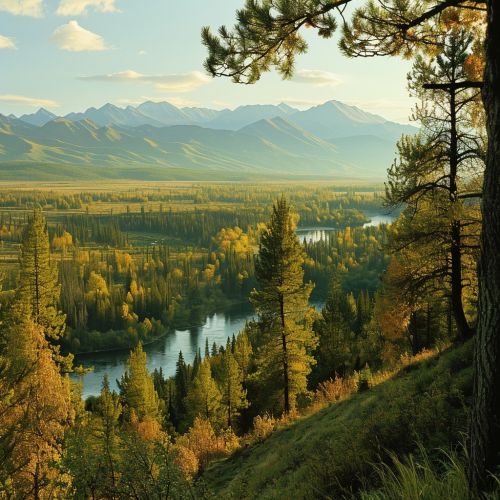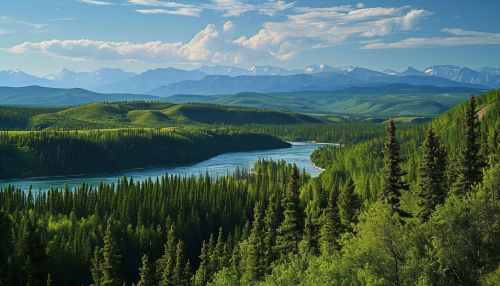Natural resource
Overview
Natural resources are materials or substances that occur in nature and can be used for economic gain. They include water, soil, wood, petroleum, natural gas, metals, and minerals. Natural resources can be classified as renewable or non-renewable. Renewable resources are those that are replenished naturally and over relatively short periods of time. This includes resources like sunlight, wind, and water. Non-renewable resources, on the other hand, take longer periods to replenish. They include fossil fuels like coal, oil, and natural gas, and minerals like gold, silver, and iron.


Classification of Natural Resources
Natural resources can be classified based on several factors, including origin, stage of development, renewability, and distribution.
Based on Origin
Natural resources can be classified as biotic or abiotic. Biotic resources are obtained from the biosphere and have life such as forests and their products, animals, birds, and marine organisms. Abiotic resources, on the other hand, are non-living and non-organic material. Examples of abiotic resources include land, fresh water, air, and heavy metals like iron, copper, silver, gold, and so on.
Based on Stage of Development
Natural resources can also be classified based on their stage of development. These include potential resources, developed resources, stock resources, and reserves. Potential resources are those that exist in a region and can be used in the future. Developed resources are those that have been surveyed and their quality and quantity have been determined for utilization. Stock resources are those that have been identified but cannot be used due to lack of technology. Reserves are resources that are functional but can be used in the future.
Based on Renewability
Natural resources can be classified as renewable or non-renewable. Renewable resources are those that can be replenished naturally in the course of time. Examples include sunlight, wind, and water. Non-renewable resources, on the other hand, are those that take a long time to replenish. They include fossil fuels like coal, oil, and natural gas, and minerals like gold, silver, and iron.
Based on Distribution
Natural resources can also be classified based on their distribution. Ubiquitous resources are found everywhere (for example, air). Localized resources are found only in certain parts of the world (for example, mineral ores and oil).
Importance of Natural Resources
Natural resources are crucial for the survival and development of any country. They play a crucial role in boosting the economy of a country and improving the quality of life of its inhabitants. Natural resources are used in our daily lives in various ways. For instance, we use wood for making furniture, coal for generating electricity, and metals for constructing buildings and roads.
Conservation of Natural Resources
The conservation of natural resources is crucial for the sustainability of our planet. Over-exploitation of resources, pollution, and habitat destruction are leading to the depletion of resources, posing a threat to biodiversity and our own survival. Conservation strategies include sustainable use of resources, establishment of national parks and wildlife reserves, and implementation of laws and regulations to protect the environment.
